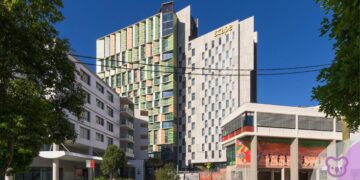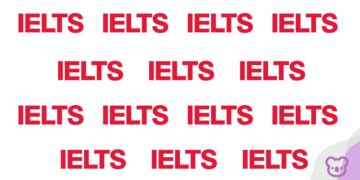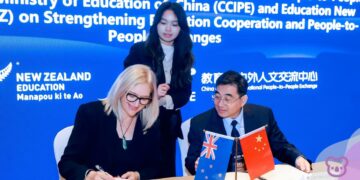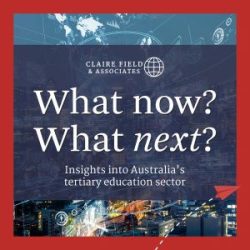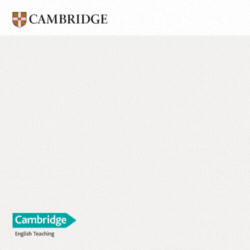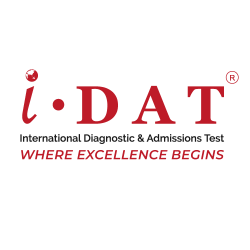If ever there was proof that international student enrolment caps, new overseas students commencements and indicative allocations is the wrong approach to managing international student sustainability in Australia it was in the latest Australian Skills Quality Authority (ASQA) February Update.
For a change, it isn’t the regulator that has me fired up (although there’s often plenty to complain about ASQA). Instead, what has me asking ‘are you kidding?’ is the number of applications that ASQA had on hand for ESOS registration in February.
220!
Australia’s international vocational education and training sector does not need another 220 providers entering the system, in this current environment, and if we are serious about managing sustainability.
Let’s look at some of the data:
Number of providers
- ASQA is currently regulating 3,837 providers (February Update). In it’s Regulation Report to December 2024, it was regulating 3,752.
- 654 are registered on the Commonwealth Register of Institutions and Courses for Overseas Students (CRICOS) to deliver VET to overseas students (December 2024)
- 282 are also registered on CRICOS to deliver VET and ELICOS to overseas students (December 2024).
- 85 ELICOS-only providers are also registered on CRICOS and regulated by ASQA (December 2024).
- 956 providers regulated by ASQA have been given an indicative allocation for 2025.
Assuming all 220 providers receive ESOS registration, which is no guarantee of course, that would be a 23 per cent increase in the number of providers regulated by ASQA that may receive a new student allocation in 2025.
Number of international VET students
- 203,210 non-government VET commencements, as at November 2024 YTD. Up from 178,311 from the same period in 2023 (14 per cent increase).
- 374,033 non-government VET enrolments, as at November 2024 YTD. Up from 310,152 in the same period in 2023 (21 per cent increase).
Acknowledging that ASQA also regulates some ELICOS-only providers, and it is unclear if any of the 220 providers are ELICOS-only.
Indicative allocations
The indicative allocations for VET providers under Ministerial Direction 111 have been set at a minimum of 20 by the Department of Employment and Workplace Relations (DEWR). I’m on record as saying this is infinitely more sensible than the initial planned allocations (including some at one or two) if the ESOS Amendment Bill have passed Parliament (TKN 100225).
However, another 220 providers, with a minimum 20 allocation, adds another 4,400 new students to the overall number of new students in Australia.
Visa grant rate
The above possible 4,400 new students into the sector is the theoretical part of the story. Because the reality of what is happening with international student visa grant rates, particularly in the VET sector, tells another side of the story.
The data below is for the entire VET sector, as the Department of Home Affairs doesn’t split data from government and non-government providers.
| Student visa grant rates | Financial year of decision | |||
| 2021-22 | 2022-23 | 2023-24 | 2024-25 to 31 January 2025 | |
| VET Sector | 84.0 % | 77.0 % | 61.4 % | 58.6 % |
As can be seen from the data, the VET sector is in dire straits over visa grants, dropping from 84 per cent only four years ago to 58.6 per cent at the end of January. And remember, every rejection from 1 July 2024 is a $1600 visa application loss to the prospective student.
This calls into question the sustainability of an additional 220 new providers offering courses to international students at the VET level.
National Planning Level
Another concern about the impact of 220 new providers is the possibility of cannibalisation if either major political party continues the National Planning Level (NPL) concept for managing new international students post-election.
As a reminder, the Labor Party set the NPL under the ESOS Amendment Bill at 270,000. With some minor changes being made to the NOSC under Ministerial Direction 111, this is now 269,500, and the private VET sector component is around 91,000. The Coalition is also on record as saying that 270,000 is too high.
The two government agencies, Department of Education and DEWR, developed a formula that would result in the required NPL, based in part on the number of providers in the system. Adding more providers will necessarily reduce individual provider allocations, causing further financial strains on existing providers.
This will also impact financial viability of some providers, causing closures, which in turn puts a strain on the Tuition Protection Service (TPS).
Or maybe it won’t! Given discussions I’ve had in the sector, it’s also not unreasonable to assume that some (many?) of these applications are for providers who intend to deliver courses that are currently exempt from indicative allocations, such as pilot training.
If that’s the case, then that’s a risky business plan with the current political uncertainty. It also does nothing to prove to the Government or the Coalition that the international education industry can behave in a way that aligns with clearly expressed policy imperatives.
Pressure on the regulator
Dare I say that an additional 220 providerss also puts additional pressure on the regulator to monitor quality. As alluded to above, there is already regular criticism of ASQA from parts of the sector that bad actors in the system are not dealt with.
What’s the answer?
I’ve long advocated for an approach to sustainability that would look at the international education sector in its entirety, rather than a provider-by-provider approach. How many international students we want in Australia will inform the number of providers we need in the system.
This won’t be without the need for some hard decisions. But the current system that allows an unlimited number of providers to be registered, provided they meet the requirements, is untenable and takes no account of the operating environment.
We simply don’t need another 220 VET providers training international students in Australia.
The ASQA Update – February 2025 is available here.



